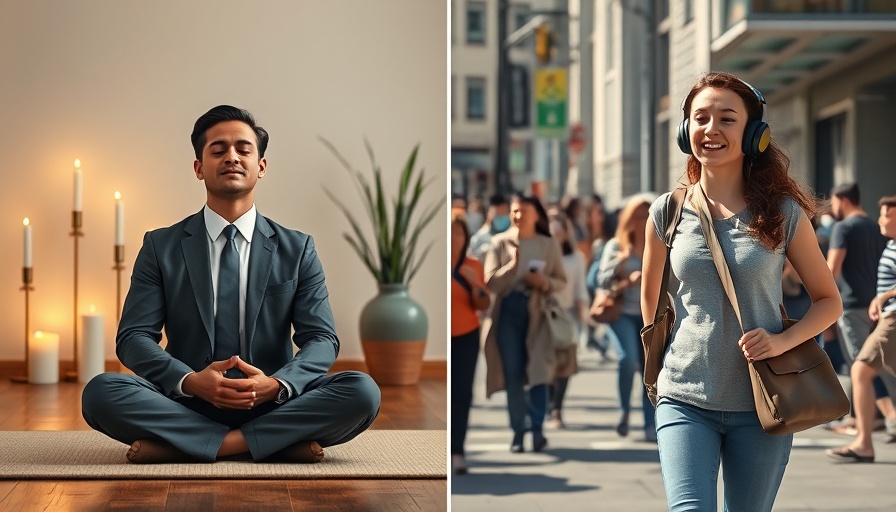
Understanding Mindfulness: A Path to Mental Well-being
In today's fast-paced world, more and more people are looking for effective ways to enhance their mental well-being. Mindfulness is a popular topic in discussions about stress reduction and relaxation. However, many might wonder, what does mindfulness truly involve? This article breaks down the concepts of formal and informal mindfulness practices, shedding light on how you can easily incorporate them into your daily routine to foster better mental health.
What is Formal Mindfulness Practice?
Formal mindfulness practice refers to structured meditation sessions where the individual can focus entirely on the activity. Christiane Wolf, a meditation teacher, describes formal mindfulness as engaging in specific techniques with clear beginnings and ends designed to guide your attention. Such activities may include five-minute breathing exercises or a body scan, where practitioners intentionally set aside time to meditate or reflect.
Examples of formal mindfulness exercises include:
- A Five-Minute Meditation to Develop Better Focus: This short meditative practice helps center your thoughts, enhancing your concentration throughout the day.
- Loving-Kindness Meditation for Beginners: Tapping into feelings of compassion and kindness can greatly improve how we interact with others and ourselves.
- A Simple Practice for Regulating Stress: When stress levels rise, this practice guides you through methods to calm your body and mind.
The Beauty of Informal Mindfulness Practice
On the other hand, informal mindfulness is a more adaptable approach. It's about being present and aware during the mundane tasks of daily life. Whether it's washing dishes, petting your cat, or simply walking, bringing your full attention to these activities allows you to practice mindfulness without setting aside extra time. The concept here is that everyday activities can become moments of mindfulness, leading to greater awareness and relaxation throughout your day.
To seamlessly incorporate informal mindfulness into your life, consider these activities:
- Mindful Conversations: Engage fully in conversations, focusing on the words and feelings being shared. This enhances relationships and understanding.
- 5 Simple Mindfulness Practices for Daily Life: Simple habits like being aware of your breath or the sensations in your body can enrich your experiences.
- Mindful Movement in Exercise: Integrating mindfulness during physical activities, such as yoga or jogging, can deepen your connection to your body.
The Impact of Mindfulness on Mental Health
Both formal and informal mindfulness practices can have profound effects on mental well-being. Studies consistently show that mindfulness can reduce stress, alleviate anxiety, and improve overall mood. The practice of being present enables individuals to confront their thoughts and feelings without judgment, creating space for healing and personal growth.
In Fort Smith and the River Valley, as awareness about mental health continues to rise, integrating mindfulness into daily habits can be a game changer. This practice helps individuals of all ages find calm amid chaos and cultivates an atmosphere of self-acceptance and peace.
Practical Tips for Starting Your Mindfulness Journey
Getting started with mindfulness can be as simple as setting aside a few minutes daily. Here are some practical tips:
- Start Small: Choose one formal practice to engage in a few times a week and gradually increase the frequency.
- Integrate Informal Practices: Remember to be mindful during everyday tasks; it can transform the most routine actions into an opportunity for joy.
- Join a Community: Consider joining local mindfulness groups or classes to connect with others on a similar journey and share experiences.
Embrace Mindfulness for a Healthier Life
Adopting mindfulness in its formal and informal realms can lead to significant improvements in your overall mental well-being. It may seem daunting initially, but with small steps and genuine practice, you can cultivate a state of awareness that enriches every moment of your life. Take this opportunity to explore both types of practice and see how they resonate with you.
Ready to dive deeper into mindfulness? Start today by setting aside time for a quick meditation or being fully present in your next activity!
 Add Row
Add Row  Add
Add 




Write A Comment